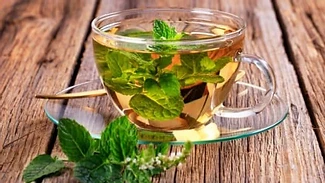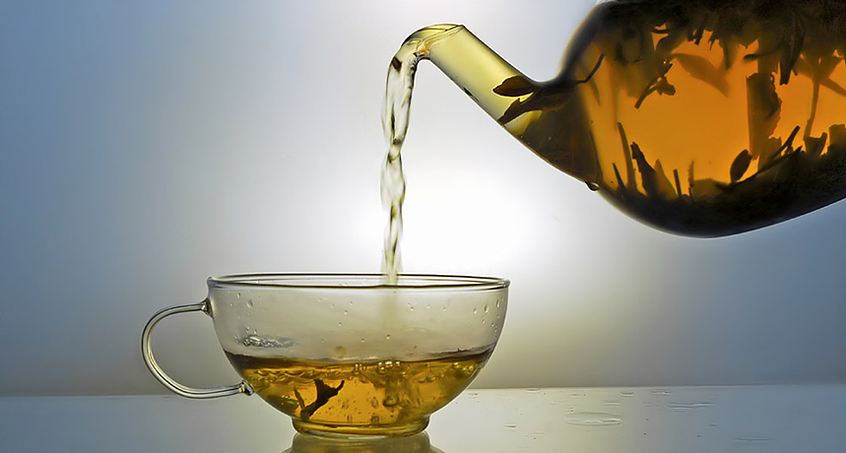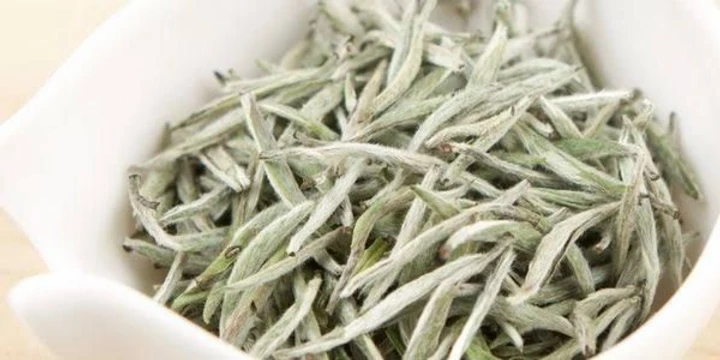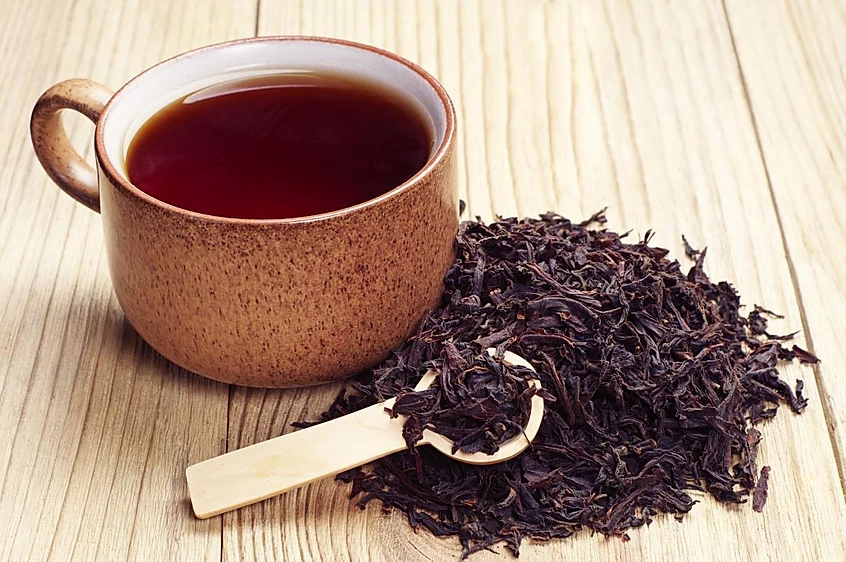Steeped to Perfection Part 1: The Way of the Leaf
- Neil Padilla

- Jul 18, 2020
- 6 min read
Updated: Jun 10, 2022
This post was first published on March 21, 2020, on Centrasiatours.com. You can view the original article here.
===
Tea and Alchemy
The preparation of tea is an art. Wait, scratch that… While it is an art, it is something so much more than that. What do you call creating something incredibly different from what you made it from?
The preparation of tea is alchemy. Yes, that sounds right, doesn’t it?
Let me explain.
There is nothing simpler in the world than preparing tea. Just add hot water to a pile of dried-up leaves, a bunch of flowers, or a hill of beans, and voila: a hot beverage for you to enjoy at any time of the day.
This part can be so deceptively easy, though, as behind the pile of dried-up leaves hides a complex and magnificent microcosm of industry - and more importantly - history.
For centuries, cups of tea have given people boosts of energy or have given aid when one tries to go to sleep. It has alleviated aching stomachs and helped clear people’s minds for tasks that lay ahead, and we have not even touched on the medicinal properties tea can provide.
Tea can be different things to different people and at one point, it became so highly valued that wars were started in its name.
Yes, making tea is alchemy and this is your first lesson in becoming a master alchemist.
Let’s begin.
The Way of the Leaf
As per The Tea Enthusiast’s Handbook: A Guide to the World’s Best Teas by Mary Lou and Robert J. Heiss, there are 20,000 different teas in the world. This is evident by going to any grocery store or supermarket. It’s highly likely that the store would have a separate aisle dedicated to tea.

You’ve been there and trust me, I’ve been there, it can be daunting. There I was, just trying to improve my beverage game or just looking for a box or canister of tea that could help me relax or get a boost of energy and you end up confused, about which one to get, so you settle for something that sounds interesting.
Maybe it has a colorful box or you go with something well-known like Earl Grey. Maybe you settle for green tea cause that sounds so zen. Not knowing what type of tea you might want or need could spell your entire relationship with tea.

The one thing you want to remember when trying to discern what tea you're having is this: all teas, the real tea, of which there are 6 main varieties, come from one plant: Camellia sinensis – an unassuming evergreen shrub that can grow up to 18 meters or 59 feet – quite tall for a shrub. It can be maintained to a smaller size with constant trimming.
I personally prefer peppermint tea for the energy boost it gives me and lemongrass tea for the calming effect it gives to my tummy, but calling these 'teas' would be a mistake. Basically, If it does not come from Camellia sinensis, it’s not a tea but a tisane [say it with me now: tuh•zan]. These are infusions made from leaves, roots, and any other part of a plant as well as herbs and spices all of which are also referred to as herbal teas.
So yes, not all teas are really teas, and the varieties including the ones I like as well as ginger, jasmine or any other variety are tisanes.

That being said, if you are looking to get a taste of the real deal in terms of tea, you’ll find a few things that are common amongst all of them. First is the caffeine content. Infusions are caffeine-free whereas tea has caffeine content. This amount is assorted depending on the variety.
The second thing you have to consider is the list of ingredients because, yes, they really do have to place “Tea” as an ingredient if the product really does contain tea in it.
Since we are talking strictly about defining tea we’ll discuss tisanes in a future feature article; for now, let’s go back to the hypothetical tea aisle in your local supermarket. Imagine that it was fully stocked with all teas and tisanes and we’re just after the real deal. We’ve already probably removed a lot of items in that aisle.
Flavor and Maillard’s Reaction
Before moving forward, you need to understand the main categories of tea: green, yellow, white, black or red, oolong, and fermented. Every variety of tea will fall into one of these categories because of its color and mainly, flavor and of one important thing: oxidation.

You can quantify flavor into two categories: taste and aroma. These are generated from chemical reactions that happen during the production process that affects the composition of the leaf and it has a lot to do with the Maillard reaction.
Whoa! I know you did not sign up for a chemistry lesson but here we are. I didn’t even know we’d end up here but let’s go with it. It makes for a pretty interesting read. The more you know, right?

Named after French chemist Louis-Camille Maillard, who first described it in 1912 while attempting to reproduce biological protein synthesis, the Maillard reaction is a chemical reaction between amino acids and reducing sugars that gives browned food its distinctive flavor.
This is different in tea, however, as the reaction affects the creation of Tannin constituents such as Thearubigins and Theaflavins. In his book Tea: A User’s Guide Tony Gebely defines these two.
Theaflavins, add briskness, brightness, and yellow color. Thearubigins, on the other hand, add depth, body, and a reddish color. This is what causes the different colors between the six tea varieties. Let’s go through them one by one:
Green
Green tea is perhaps the one variety of tea most associated with Asian countries apart from China like Japan and South Korea. This type of tea is very lightly oxidized which gives it a lighter profile at the cost of quickly losing its flavor as compared to black and oolong tea.
Teas classified as green teas are matcha, sencha, longjing, and bilochun. Matcha can be traced to early uses of tea when it is ground up and the resulting powder was packed into cakes which were then reground and added to hot water. Back then it was called Moa Cha.

Yellow
Yellow tea is a very delicate type of tea that has the fragrance of green tea but with added suppleness. It has a warmer and milder taste as compared to its green tea counterpart. This type of tea is slightly obscure but highly valuable and prized amongst all the tea produced in China.
The oxidation levels of this kind of tea have to be precise. It also goes through a second firing process.
White
Producing this type of tea is a very ancient process. Often described as un-oxidized, the leaves are sunned or dried and then lightly processed preserving the leaves' medicinal and nutritional value. An example of this is Baihao Yinzhen Tea or White-hair Silver Needle so-called because the leaves remain upright when steeped in water. White tea has a tendency to be fruity and floral.

Black

Black tea, or what some would call red tea, is one with the highest oxidation levels. It often goes through rigorous processing to speed up the oxidation further. Black tea yields a hearty, reddish brew that only gets more bitter the higher the temperature you steep it in. Mostly consumed in the west, it’s famous for English Breakfast, Darjeeling, and Earl Grey.
Lapsang souchong is the oldest variety of black tea, today black tea makes up 80% of the tea produced in the world.
Oolong
In terms of smells, it is said that Oolong or wulong tea is the most fragrant of all. Since it has the widest levels of oxidation levels (between 8 and 85 percent), it covers a wide variety of tea flavors.

This variety can be best described as a cross between green and white tea.
Fermented
Ancient production methods for creating fermented tea have existed for thousands of years in parts of China. They use big tea leaves using a special knife so the tea is also called “knife tea”. These are then fired and allowed to age mostly in heaps.
Liucha is one of the traditional fermented teas in China. It has been recognized as an intangible cultural heritage.
Now that we’ve defined what tea and tisanes are and the main varieties of teas, I hope you’ll be more discerning the next time you pass by the tea aisle. Knowing what teas and tisanes are and what type of tea you want should help you pick the right variety for you.

This concludes the first part of your journey to becoming a tea alchemist. Next time, let’s explore the many names of tea and the wonderful history behind each one here at CentrAsia Tours.




Comments